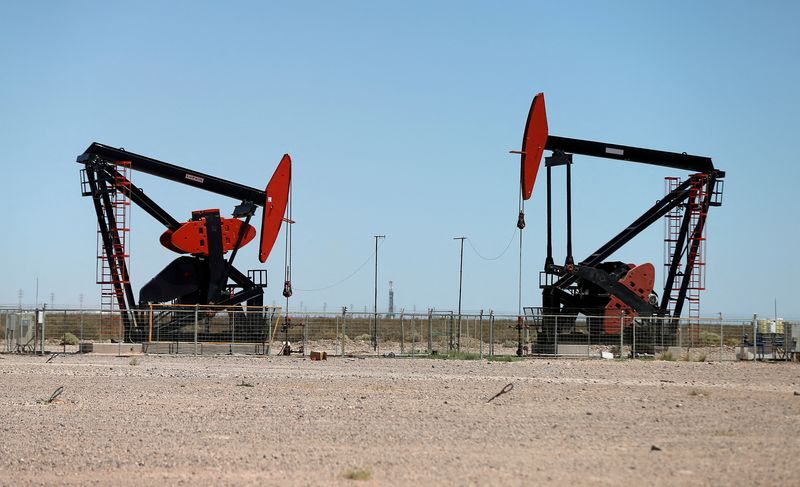By Laila Kearney
NEW YORK (Reuters) -Oil prices settled up more than $2 a barrel on Friday as attention turned to next week's OPEC+ meeting and dimming expectations that the producer group will imminently boost supply.
Brent crude futures contract for September, which expire on Friday, jumped more than $3 a barrel during the session and then pared gains to settle at $110.01 a barrel, up $2.87, or 2.7%. The more active October contract was up $2.14, or 2.1%, at $103.97.
U.S. West Texas Intermediate (WTI) crude futures settled at $98.62 a barrel, rising $2.20, or 2.3%, after jumping more than $5 a barrel.
Both contracts logged their second monthly losses, with Brent down about 4% for July and WTI nearly 7% lower.
Oil pared some gains after the release of data from oil services firm Baker Hughes, which showed that U.S. drillers added crude rigs for a record 23 months in a row, indicating more supply ahead. [RIG/U]
In July, the oil rig count rose 11, increasing for a record 23rd month in a row, while the gas count was unchanged after rising for 10 straight months, the Baker Hughes data showed.
Stronger stock markets supported oil, as did a weaker dollar, which makes oil cheaper for buyers with other currencies.
"These days, there has been a lot of macro influences on the oil market with the stock market making a nice rebound and a similar fall in the dollar feeding into (today's prices)," said John Kilduff, partner at Again Capital LLC.
Global equities, which often move in tandem with oil prices, were up on the hope that disappointing growth figures would encourage the U.S. Federal Reserve to ease up on monetary tightening. [MKTS/GLOB]
A Reuters survey forecast Brent would average $105.75 a barrel this year with U.S. crude averaging $101.28. [OILPOLL]
Front-month Brent futures are selling at a rising premium to later-loading months, a market structure known as backwardation, indicating tight current supply.
"The oil market in Europe is considerably tighter than in the U.S., which is also reflected in the sharply falling Brent forward curve," said Commerzbank (ETR:CBKG) analyst Carsten Fritsch.
Investors will next watch the Aug. 3 meeting of the Organization of the Petroleum Exporting Countries (OPEC) and allies led by Russia, together known as OPEC+.
OPEC+ sources said the group will consider keeping oil output unchanged for September with two saying a modest increase would be discussed.
A decision not to raise output would disappoint the United States after President Joe Biden visited Saudi Arabia this month hoping for a deal to open the taps.

Analysts said it would be difficult for OPEC+ to boost supply, given that many producers are already struggling to meet production quotas.
OPEC+ compliance with oil output cut pledges reached 320% in June, Russian Interfax news agency reported, citing a source familiar with the data. It said the group's combined oil underproduction was 2.84 million barrels per day last month.